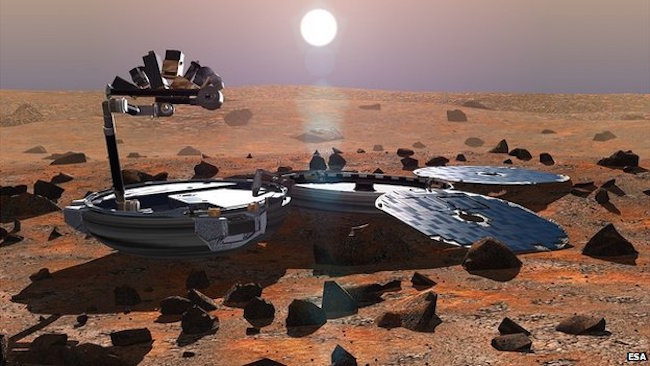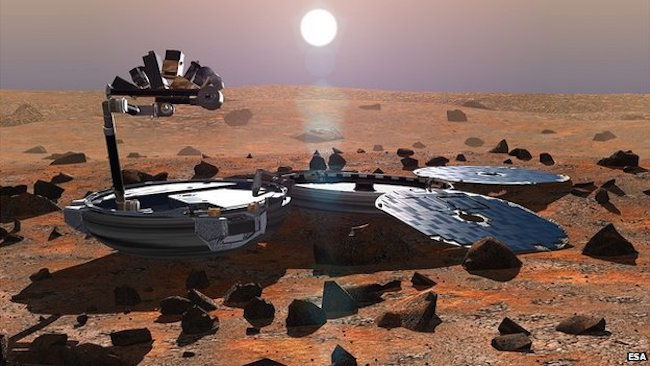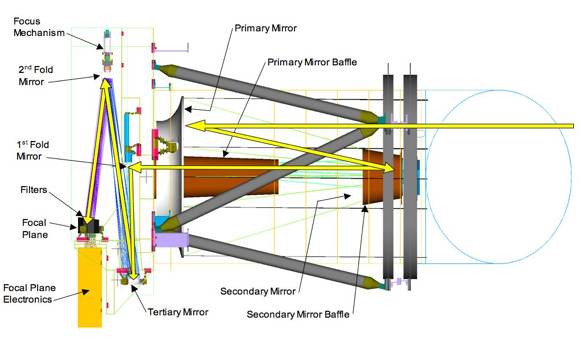

The Beagle has (finally) landed: As you will have probably seen from the mainstream news sites, the UK-led Beagle 2 Mars probe, which went missing while attempting touchdown on Christmas Day 2003, has finally been found intact and on the surface of the Red Planet. As you would expect the camera tech in Nasa’s Mars Reconnaissance Orbiter that found it is suitably astonishing.
The robot attempted a soft touchdown using parachutes and airbags, but no radio signal was ever received and the assumption had been that the touchdown mechanisms failed and it was destroyed on landing. However, the new images suggest that it the landing mechanisms all performed but the solar ‘petals’ failed to unfurl properly. Given that the probe’s design buried the radio antenna beneath these panels, there’s no way a signal could have been transmitted.
The fact that you can tell that only half of the solar petals unfurled properly from an altitude of 300km is testament to the astonishing technology of the HiRISE camera mounted on the MRO satellite. The 1000 Megapixel plus High Resolution Imaging Science Experiment can capture images at a 30cm/pixel resolution (giving a spatial resolution of 1m) but even so finding the Beagle 2 was right at the limit of its capabilities.
The camera works via the ‘push broom’ method, sweeping up a row of 20,000 pixels at a time (covering a surface distance of 6km) into 10 detectors 20000 pixels wide as it passes over the surface at 4km per second. While the width of the image is set, the height of the picture is only limited by the onboard storage, which for the camera itself is roughly 1bn pixels. Once the image is complete this is transferred over to the spacecraft’s memory and from there back to Earth.

Light is captured by a 50cm primary mirror before being focussed by a series of additional mirrors onto the detectors (there are five mirrors but no lenses in the camera to prevent distortion). The HiRISE’s focal plane array consists of 14 linear CCDs. Most of the CCDs use a red filter that just allows red light to enter the detector, while in the very centre of the array there are four extra CCDs, two each behind blue-green and infrared filters, allowing the central 20% of each image to be reconstructed in colour. Focus is purely mechanical while other instruments onboard the MRO are quietened while the camera is in use to guard against any vibration.
All this technology has finally found Beagle 2 and the enthusiasm of the Open University’s Professor Colin Pillinger, who sadly died a year ago with the probe still missing presumed destroyed, has been vindicated. The probe has also had a profound impact on the way that missions are conducted, a committee of inquiry report making 19 recommendations, including that communications with future probes be maintained through the various descent phases.
As a result, when Esa's ExoMars rover tries to land on the surface of the planet in 2019, it will be relaying information all the way down. If it can get to within 5km of its touchdown zone like Beagle now appears to have done, it will have scored the equivalent of a cosmic bullseye.
Tags: Technology


Comments